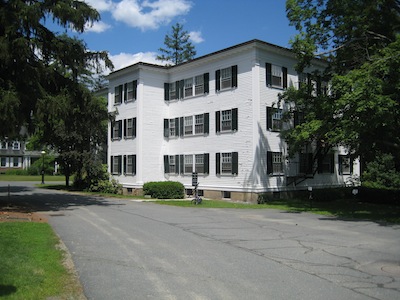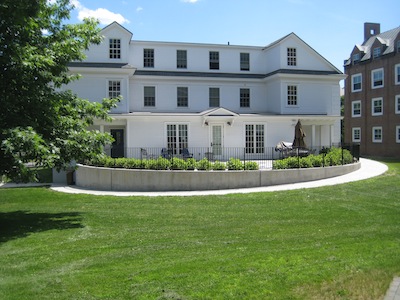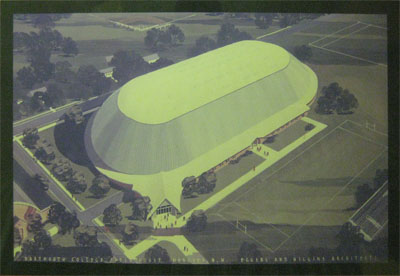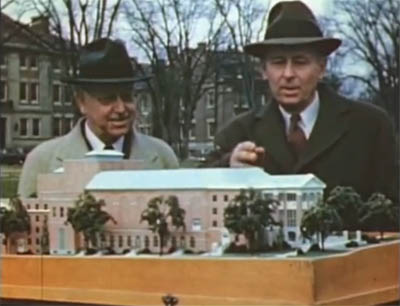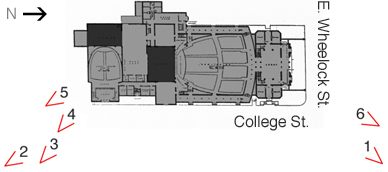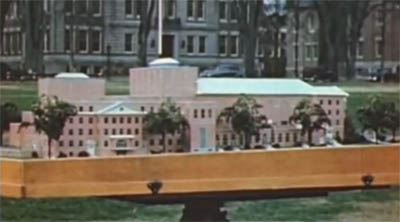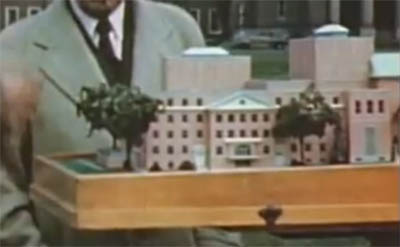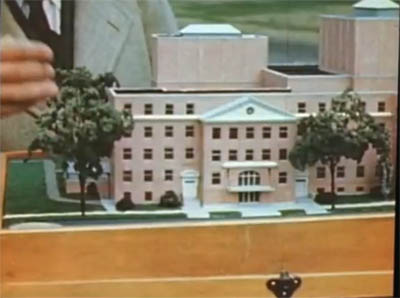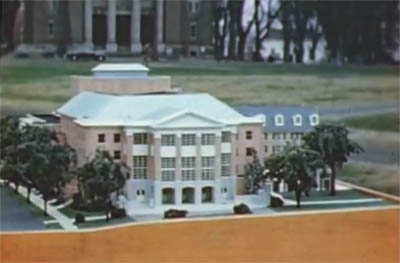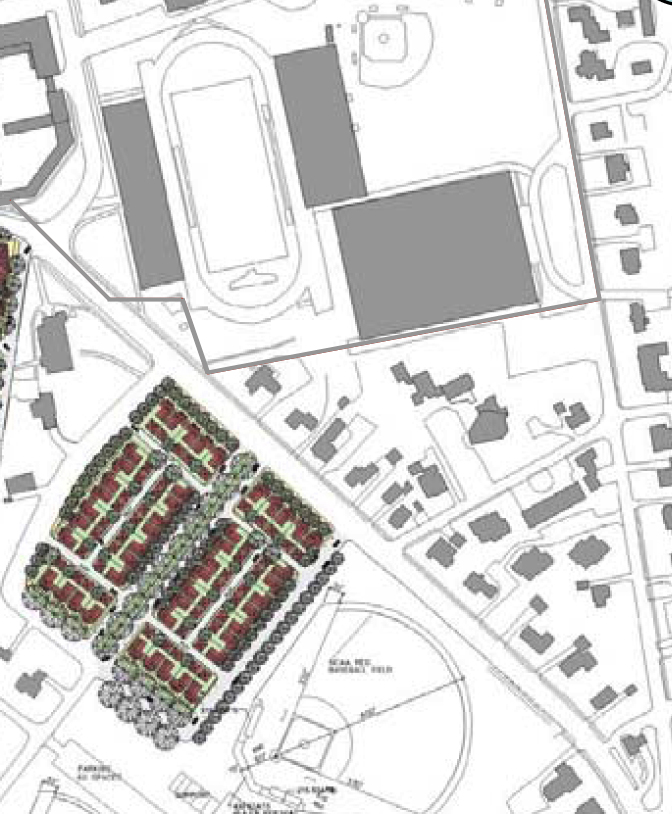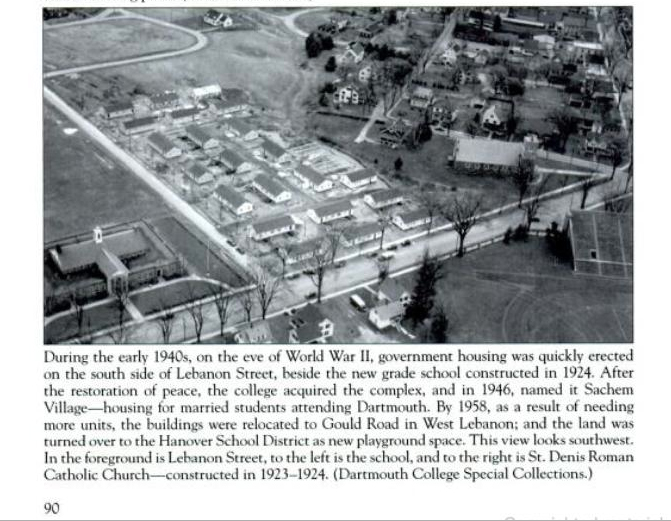The Dartmouth reports that the freestanding Class of 1953 Commons and the Thayer Dining Hall replacement, projects that have been on hold for about a year and a half, have both been canceled. The funds raised for 53 Commons will fund the renovation of the original Thayer Hall instead.
Dartmouth has frequently wrestled with the question of whether to have a single main dining hall or a widely-scattered group of two or more dining halls. Commons in College Hall was the only dining hall from 1901 to 1937, when Thayer Dining Hall opened. But Thayer was just across the street from Commons, and connected by a tunnel — the centrality remained.
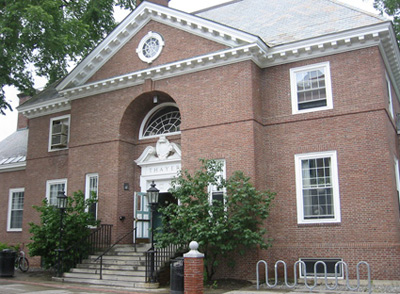
Thayer Dining Hall
About ten years ago, Dartmouth decided to put a new dining hall at the north end of campus as the centerpiece of a group of new dormitories and a polar counterpart to Thayer (see the North Campus Master Plan). Moore Ruble Yudell with Bruner/Cott designed the building, which was to be called the Class of 1953 Dining Commons and can be seen in a series of sketches from the spring of 2007.
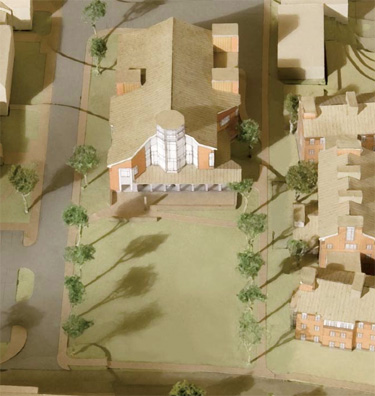
Detail of photo of model of 53 Commons, designed by Moore Ruble Yudell with Bruner/Cott, from 1953 Commons Sketches
This building and a temporary dining hall were to relieve pressure from Thayer so that Thayer could be demolished and replaced by a building designed by Kieran Timberlake. Known in the collegiate context for spare stone dormitories and a glass-walled dining hall at Middlebury, Kieran Timberlake considered renovating Thayer in its Basis of Design (November 3, 2006). The firm’s final proposal involved the complete replacement of Thayer with a new building set back from Mass Row.
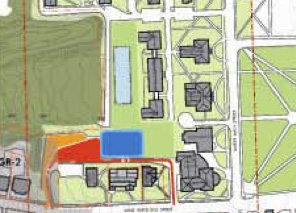
Detail of planning alternate 1a from Kieran Timberlake Basis of Design
The firm produced preliminary designs (The Dartmouth) before Dartmouth put the project on hold in the spring or summer of 2008.
Some concern over what appeared to be the Thayer Replacement’s poor preservation practice was expressed here. So although one wishes the circumstances were otherwise, it is good to see that Thayer will survive. No mention has been made of who will handle the renovation, but judging from their stylish renovations of Davenport and Pierson Colleges at Yale, Kieran Timberlake could produce a very interesting design.
[Update 01.17.2010: Both the article in the D and the press release note that Thayer will be renamed the Class of 1953 Commons. The release also emphasizes the preservation aspect and notes that work will begin this summer and end in 2011.]
